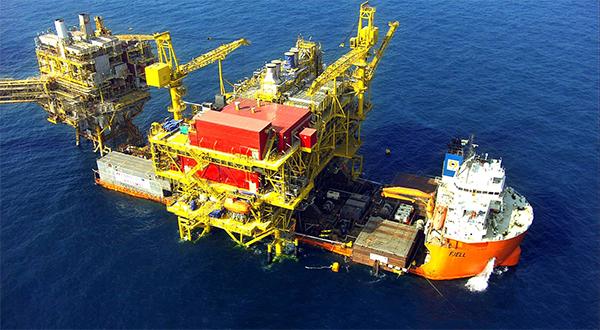
INDIA'S HIGH GROWTH

According to WBG, the Indian economy will continue to post robust growth in the coming years.
India's economy expanded at a faster pace in financial year 2016 even as a number of its growth engines stalled. Agriculture – having faced two consecutive drought years – rural household consumption, private investments, and exports have not performed to potential. The oil bonanza most directly benefited the government, which for the first time in five years exceeded its revenue collection targets and used the resources to contain the fiscal deficit, transfer more resources to states, and spend more on infrastructure. Capital spending by the central government was ramped up, its efforts amplified by state governments that had additional resources from larger fiscal devolution.
But it was urban households who were the main drivers of growth in FY 2016. The manufacturing and services sectors, which expanded 7.4 and 8.9 percent, respectively, also created urban jobs. Inflation abated, primarily because of lower food prices. Lower inflation raised real incomes, and allowed RBI to cut interest rates, which favored the financially-connected urban households.
To remain on this growth path and sustain growth at 7.6 percent into FY17, the challenge for the Indian economy is to activate the stalled engines – agricultural growth and rural demand; trade; and private investment, while ensuring that demand from urban households and public investments, what describes as the working engines of the economy, do not run out of fuel. The dissipation of the large boost from historically low oil prices in the past year will make this a challenging task, but prospects of a normal monsoon will help.
It's expected India's economic growth to be at 7.6 percent in 2016-2017, followed by a modest acceleration to 7.7 percent in 2017-2018 and 7.8 percent in 2018-2019. Even while uncertainty about the momentum of growth is high and downside risks substantial, these risks can be balanced in the short run by the possible upside from a favorable monsoon. The most significant near-and medium-term risks stem from the banking sector and its ability to finance private investment which continues to face several impediments in the form of excess global capacity, regulatory and policy challenges, in addition to corporate debt overhang.
"There are good reasons for confidence in India's near-term prospects. However, a pickup in investments is crucial to sustain economic growth in the longer term. The recently approved Bankruptcy Code is helpful in this regard, and once it is implemented it will help unleash the productivity that Indian firms need in order to create jobs and become globally competitive," said Onno Ruhl, World Bank Country Director in India.
In less than three decades, India's financial sector has evolved from an essentially state-controlled system toward one with greater participation of private banks and generally more competition. Banks currently have capital levels in excess of regulatory requirements, regulations have been strengthened, and overall credit growth in real terms has been resilient. On the other hand, concerns have arisen about growing non-performing assets (NPAs) and declining credit growth, particularly in public sector banks (PSBs).
It offers two key reform fronts for the financial sector. First, accelerate the ongoing structural transformation of the sector toward one that is more market-oriented and competitive, for example by providing a roadmap for relaxing government mandates on banks. Second, address the NPA challenge, both by its branches (through recapitalization of PSBs and providing tools for banks to manage stressed assets), and its roots (through stronger governance of both commercial banks as well as the corporate sectors that have generated the largest share of NPAs).
"India's financial sector has performed well on many dimensions and can be a reliable pillar of future economic growth. However, accelerating structural reforms and addressing the non-performing asset (NPA) challenge remain urgent tasks," said Frederico Gil Sander, Senior Country Economist.
Another significant step taken by the government has been the greater devolution of the spending power from the center to the states and local bodies. States are now responsible for 57 percent of the spending, which accounts for 16 percent of GDP. Of this, nearly 74 percent of the funds are untied (compared to an average of 57 percent during the 13th Finance Commission period), allowing more flexibility to states.
An analysis of the FY17 budget documents of 20 states suggests all states gained following the implementation of the 14th FC recommendations in FY16, but the extent of gains varied significantly. Tax devolution increased everywhere, even for states that saw a reduction in their inter-state share, such as Bihar and Rajasthan. Overall, transfer of grants to states increased by 0.7 percent of GDP in FY16 compared to the budget estimate of a net increase of 0.5 percent.
Health and education expenditures increased in almost every state in FY16. Combined health and education expenditures increased in 13 of the 14 states for which data was available. Education expenditures generally increased more than health, likely on account of implementation of the Right to Education Act and as states allocated additional amounts to cover lower contributions from the centrally sponsored schemes. On average, states increased health and education expenditures by 0.4 percent of GSDP. Uttar Pradesh spent over one-third of its additional resources on health and education. Rajasthan and Kerala stand out as spending the equivalent of over 70 percent of additional resources on health, education, and infrastructure.
-----
Earlier:
THE BIGGEST ASIA'S LNG TERMINAL






